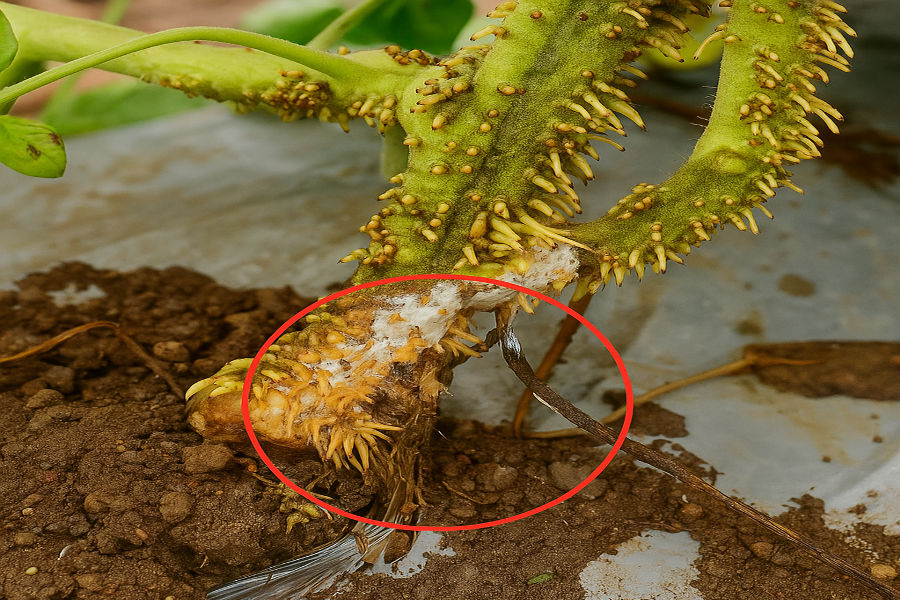Sclerotium rolfsii: The Silent Soil-Borne Killer of Crops
Among the many soil-borne diseases that harm crops worldwide, Sclerotium rolfsii is one of the most destructive. This fungus is a master survivor, capable of infecting more than 500 plant species. It thrives in warm, moist conditions and has earned a reputation as the cause of southern blight, stem rot, or collar rot. For farmers, recognizing and managing this pathogen is crucial to saving crops and reducing yield losses.
What is Sclerotium rolfsii?
Sclerotium rolfsii is a soil-borne fungus that attacks plants at the collar region (the base of the stem near the soil). Once established, it produces toxins and enzymes that rot plant tissues. The disease can appear suddenly: a plant that looks healthy one day may wilt and collapse the next.
Symptoms to Watch For
-
White, cottony fungal growth at the base of the stem.
-
Small, round, mustard-seed-like structures (sclerotia) around the infected area.
-
Yellowing and wilting of leaves.
-
Soft rot at the stem base, leading to plant collapse.
If you see cottony growth plus mustard-like seeds near the plant’s collar, it is very likely Sclerotium rolfsii.
The Secret Weapon: Sclerotia
The fungus survives by producing sclerotia—hard, round, seed-like structures. These act like the “eggs” of the fungus, allowing it to survive in soil for 2–3 years even without a host crop. When conditions turn favorable, the sclerotia germinate, produce fungal threads (mycelium), and infect nearby plants.
Favorable Conditions
Sclerotium rolfsii becomes especially dangerous under:
-
Warm temperatures (25–35°C, with optimum around 30°C).
-
High soil moisture and humidity.
-
Poor soil aeration and dense planting.
-
Acidic soils (pH 4–6).
Why It Is Dangerous
-
Attacks over 500 crops, including tomato, groundnut, onion, chilli, brinjal, legumes, and cotton.
-
Causes heavy yield losses, often 30–80% in susceptible crops.
-
Survives for years in soil, making complete eradication difficult.
Management Strategies
While it cannot be fully eliminated, Sclerotium rolfsii can be effectively managed with an integrated approach.
Cultural Practices
-
Rotate with non-host crops like maize or sorghum.
-
Remove and destroy infected plants.
-
Maintain proper drainage to prevent waterlogging.
-
Practice soil solarization by covering soil with a plastic sheet in summer to kill the fungus.
Biological Control
-
Use beneficial fungi such as Trichoderma harzianum or Trichoderma viride, which attack sclerotia.
-
Apply beneficial bacteria like Bacillus subtilis and Pseudomonas fluorescens to suppress fungal growth.
-
Combine these biocontrol agents with organic amendments like neem cake for better results.
Chemical Control
-
Treat seeds with fungicides such as thiram, captan, or carbendazim.
-
Drench soil with fungicides like carbendazim, tebuconazole, or propiconazole when infections are severe.
Integrated Disease Management (IDM)
The most effective method combines cultural, biological, and chemical practices. For example, soil solarization plus Trichoderma application and neem cake amendment creates a healthy soil environment that suppresses the disease.
